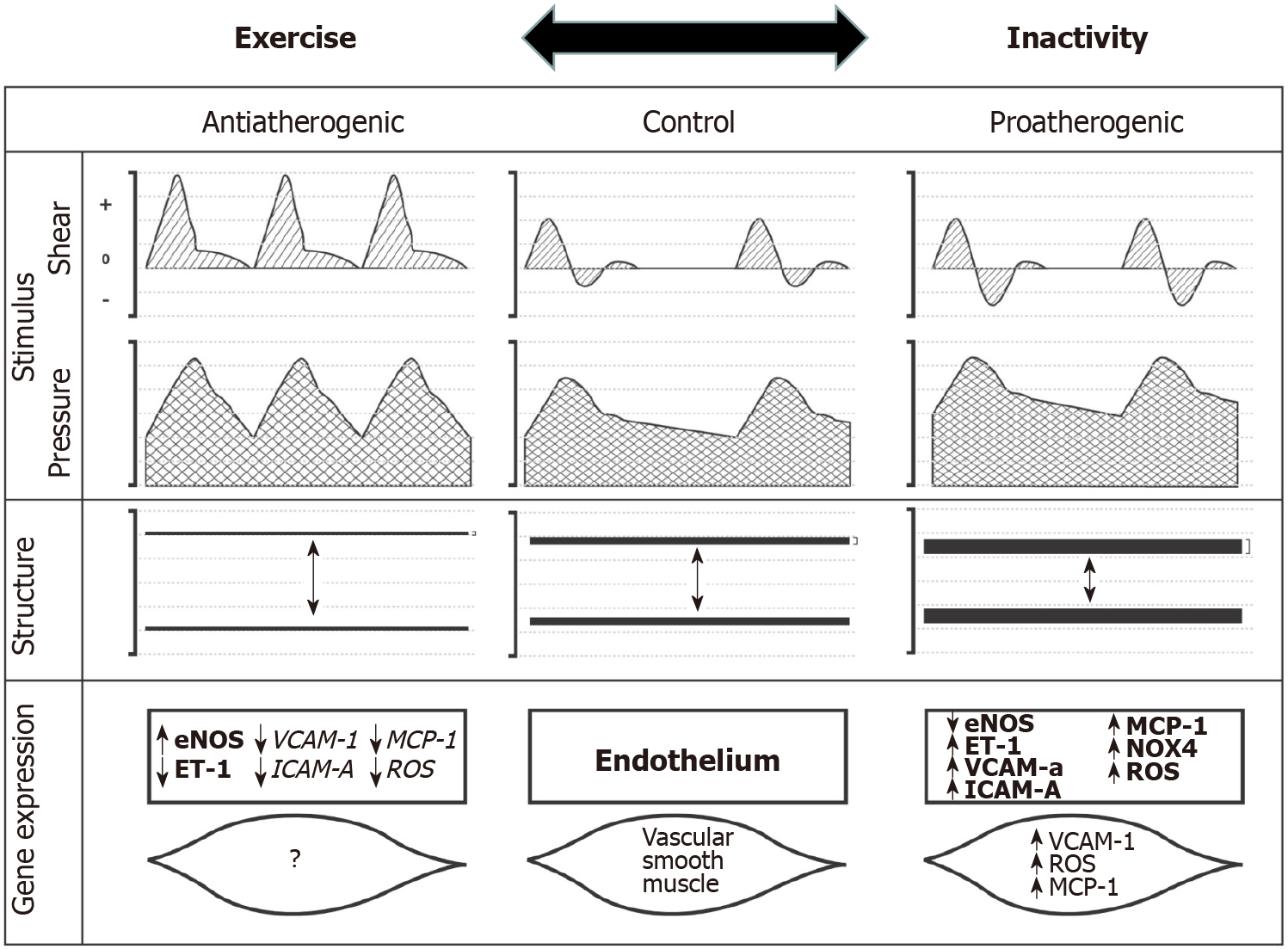Copyright
©The Author(s) 2021.
World J Cardiol. Sep 26, 2021; 13(9): 399-415
Published online Sep 26, 2021. doi: 10.4330/wjc.v13.i9.399
Published online Sep 26, 2021. doi: 10.4330/wjc.v13.i9.399
Figure 1 Schematic and hypothetical representation of how hemodynamics during exercise may impact vascular phenotype.
The middle panel (Control) represents an artery being exposed to a “typical” hemodynamic stimulus [i.e. shear stress pattern (upper signal) and blood pressure (lower signal)]. No abnormalities are observed in artery structure [i.e. diameter (arrow) or wall thickness (bracket) or gene expression in the endothelial or smooth muscle cells. The left panel represents hemodynamic stimuli that may be associated with antiatherogenic effects, which include a predominant antegrade shear pattern and cyclic, intermittent elevations in arterial blood pressure (or pulse pressure). These hemodynamic stimuli are related to outward remodeling and a smaller arterial wall thickness, while some observed (in boldface) antiatherogenic genes have been shown to be upregulated, and proatherogenic genes are hypothesized (in italics) to be downregulated under these conditions. On the right panel, proatherogenic shear (dominant retrograde shear component) and pressure (chronic elevation in systolic and diastolic pressure) hemodynamic stimuli are presented. These stimuli are believed to contribute to inward remodeling, thickening of the artery wall and increased expression of proatherogenic genes and downregulation of genes involved on the NO pathway. Adapted from Newcomer et al[14] with permission from the American Physiological Society. Citation: Newcomer SC, Thijssen DH, Green DJ. Effects of exercise on endothelium and endothelium/smooth muscle cross talk: role of exercise-induced hemodynamics. J Appl Physiol (1985) 2011; 111: 311-320. Copyright ©The American Physiological Society (APS).
- Citation: Sakellariou XM, Papafaklis MI, Domouzoglou EM, Katsouras CS, Michalis LK, Naka KK. Exercise-mediated adaptations in vascular function and structure: Beneficial effects in coronary artery disease. World J Cardiol 2021; 13(9): 399-415
- URL: https://www.wjgnet.com/1949-8462/full/v13/i9/399.htm
- DOI: https://dx.doi.org/10.4330/wjc.v13.i9.399









